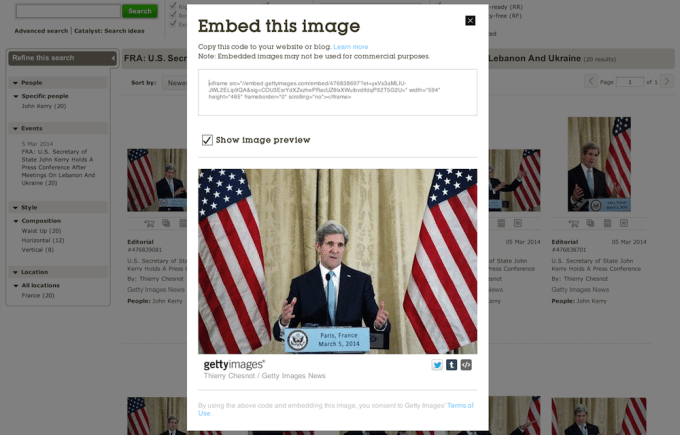Last Updated on 03/06/2014 by Chris Gampat
When we first heard about Getty making the majority of its photographs free to share, without watermarks, our initial reaction was, “now they’ve lost it completely.” Without further explanation, this sounds almost as if the stock agency were giving away the work of its contributors for free, essentially generating even less income for working photographers–who already in many cases have a hard time making a living from their chosen craft. However, digging into the story a little deeper, we realized that this move is actually pretty clever.
For years, Getty has seen the copyright of its photographers being infringed on the internet, mainly due to image sharing via social networks such as Twitter or Tumblr, but also by blogs and other websites. In most cases, the persons or websites sharing the images weren’t generating any profit from them. But the pictures were often acquired by means that disregarded copyright, that is by screenshot or by grabbing from other websites that happened to host them–and were often free of Getty’s watermark.
Since Getty’s images were being used in this way already, the agency figured the best solution would be to officially make its stock photos available for anyone to embed, free of charge, and without watermark. The clever trick here is that Getty is providing the embed code itself, which means that the agency has a certain amount of control over the images that are being used–which so far wasn’t the case. This also opens up the possibility to monetize the content, for example via ads, although currently there don’t seem to be any fix plans for doing so.
In essence, what Getty is doing here is comparable to the legalization of cannabis use: it is decriminalizing what is already a common practice. And instead of seeking legal action against those using its images, the agency embraces the fact that its photos are being shared and tries to gain control over how the content is spread. And in addition, this is very helpful for small, non-commercial or non-profit publications without a budget for stock photography, as it will allow them to use Getty’s material without having to pay fees, and most importantly without infringing on the photographers’ copyright.
Via The Verge


